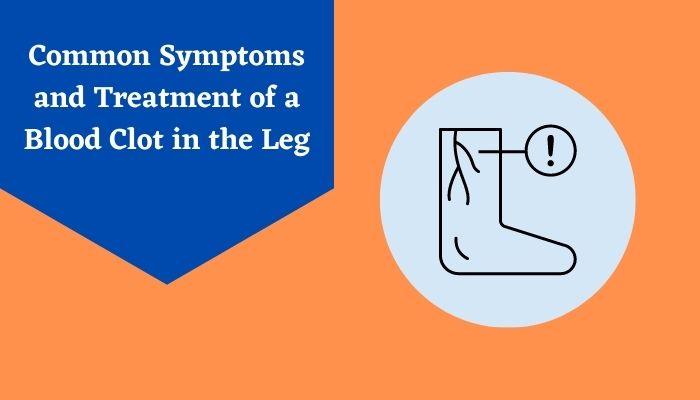Nitin’s father, aged 70 years saw swelling and felt extreme pain in his left leg. At first, he thought it could be normal muscle pain, and took an over-the-counter pain killer. But this didn’t work out and slowly and gradually he experienced difficulty in walking and an increase in swelling. Nitin got worried and got his father diagnosed and found that his father had Deep Vein Thrombosis (DVT) in his left leg. This is a medical term for a blood clot in the leg that could turn out to be fatal if left untreated, as it could reach the lungs or even the heart.
So, what is a blood clot and how is it formed? Were there any blood clot symptoms that Nitin and his father could not detect at the initial stage? If they would have detected the signs of the blood clot, so is there any effective treatment for a blood clot in the leg?
Worry not, we will discuss all these concerns and much more about blood clots in this article, so read on.
What are Blood Clots?
Blood clots are lifesavers when you cut your finger while chopping a vegetable in the kitchen. The bleeding gradually stops when the blood clots. This is where such clots are helpful for you, but otherwise, they could be dangerous for you, especially if the blood clots in a vein or artery. Whether you know it or not, blood clotting is a very crucial mechanism that your body undergoes automatically when any of the blood vessels get injured.The medical term given to a blood clot is Thrombus or Thrombosis. A thrombus developed to repair the blood vessel on a cut is considered normal, whereas, if it is developed in the leg, brain, or coronary artery, it could be fatal. The medical term given to the condition where there is a blood clot in the leg is Deep Vein Thrombosis or DVT.
What are the symptoms of Blood Clot?
The blood clot symptoms vary with different parts of the body. Moreover, some blood clots show no symptoms at all until they burst or dislodge other parts of the body through the circulatory system. Let us examine different signs of blood clots according to different locations of the body:- The symptoms of a blood clot in the leg are redness, numbness, change of skin color, warm skin, leg cramps, loss of feeling, swelling, and pain.
- The common signs of a blood clot in the lungs are shortness of breath, chest pain, rapid pulse, and fainting.
- The symptoms of a blood clot in the brain are loss of speech, loss of vision, weakness, and dizziness.
- The common signs of a blood clot in the coronary artery are chest pain, nausea, sweating, shortness of breath, and indigestion.
What is Deep Vein Thrombosis or DVT?
DVT takes place when there is a formation of a gel-like tissue made of fibrin and platelets. When a blood clot is developed deep inside a vein or artery in your leg, it can obstruct the blood flow and be problematic. Usually, DVTs are formed in the calves, thighs, or pelvis region.DVT in itself is not fatal but if the blood clot breaks free and travels to your heart or lungs through the bloodstream it could result in a life-threatening situation. So, treatment of blood clots in the leg should be taken without any delay and from a reliable healthcare facility or physician. There are many deep vein thrombosis treatments available that cures the clotting of blood. These dvt treatment at home is very easy and convenient to perform and can gain fruitful results from that.
What are the Causes of Blood Clot in Leg?
Let us acquaint you with some common causes of a blood clot in the leg:- Staying immobile for long periods
- Hormone medications like birth control pills
- Past stroke or paralysis
- Undergoing treatment for cancer
- An existing heart condition
- Inheritance and family history of blood clots
- Persistent smoker
- Aged over 65 years
- Underwent surgery recently


